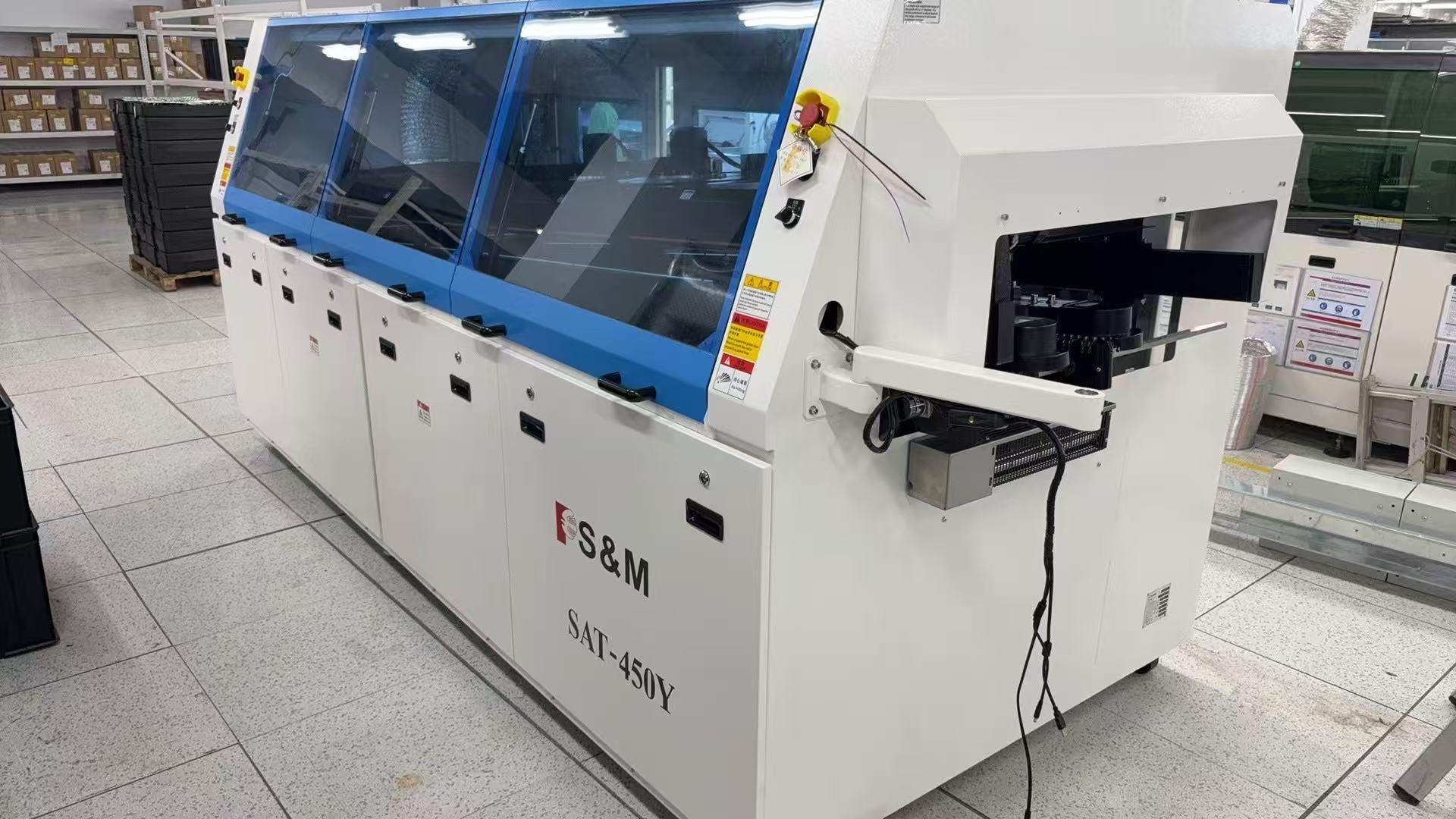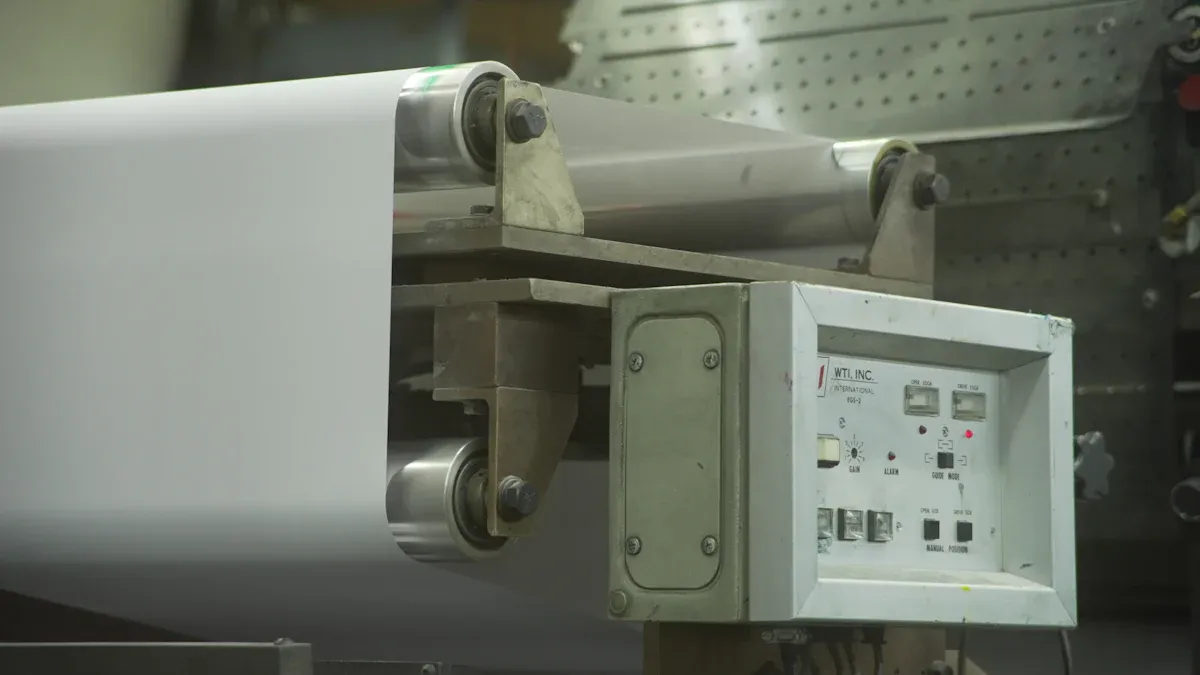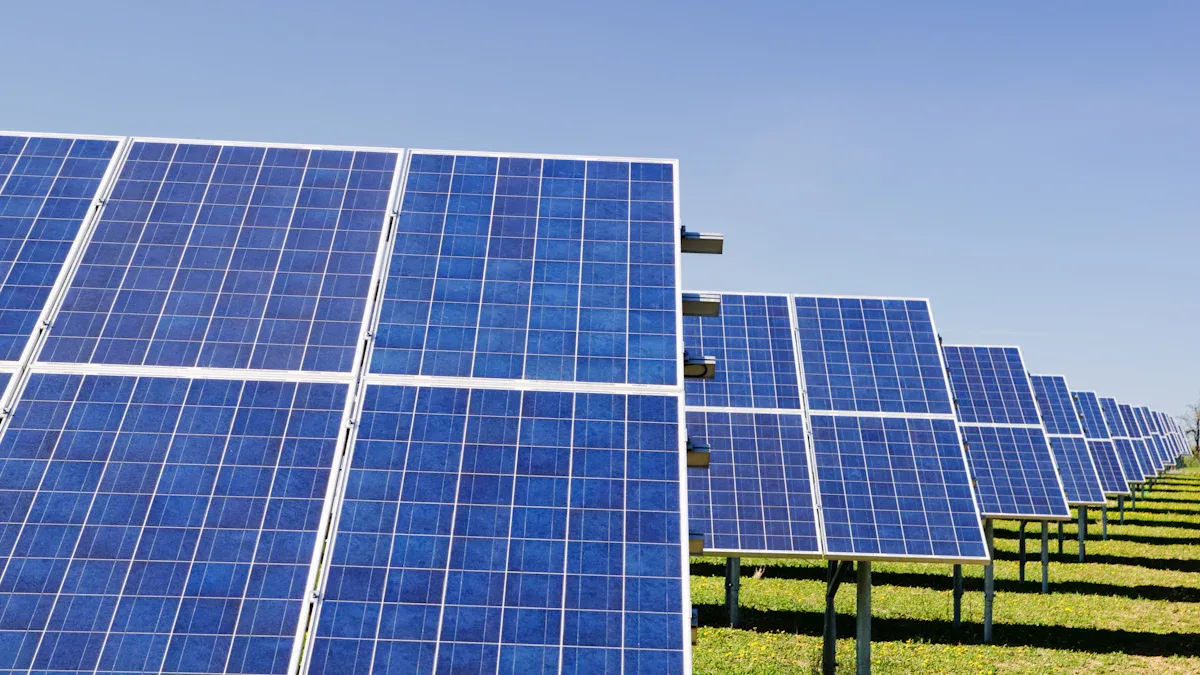
Energy-efficient wave solder machines deliver a strong return on investment for electronics manufacturers. These machines reduce energy consumption, which leads to lower operating costs and greater savings over time. Evaluating both the initial purchase and installation costs alongside ongoing operational savings allows companies to see the financial impact clearly. Considering the total value of Energy-Saving Equipment ensures that decision-makers weigh both immediate expenses and long-term benefits.
Key Takeaways
-
Energy-efficient wave solder machines lower energy use and maintenance costs, helping manufacturers save money over time.
-
Upfront costs include purchase price and installation expenses, but long-term savings often outweigh these initial investments.
-
Calculating ROI and payback period helps companies understand when their investment will start generating profit.
-
Government rebates and tax incentives can reduce upfront costs and improve the financial benefits of upgrading equipment.
-
Choosing high-quality machines with advanced features ensures longer lifespan, better performance, and stronger returns.
Upfront Costs

Purchase Price
Energy-efficient wave solder machines require a significant initial investment. Companies often face a wide range of purchase prices, especially when comparing new and used equipment. For example, used wave solder machines from reputable brands like Ersa, SEHO, and Pillarhouse typically cost between €10,000 and €80,000. This range reflects machines designed for precision, durability, and high performance, which are suitable for medium to large-scale production environments. While these figures represent used models, new energy-efficient machines with advanced features such as AI, robotics, and automation usually command even higher prices.
Note: The purchase price can be a major barrier for smaller manufacturers or startups. High upfront costs may limit access to the latest technology, but these investments often lead to greater efficiency and long-term savings for high-volume operations.
Installation
The installation process for energy-efficient wave solder machines involves several key expenses. Companies must often adapt their existing infrastructure to accommodate advanced systems. This adaptation may include:
-
Integration of automation and robotics into current production lines
-
Specialized training for operators and maintenance staff
-
Upgrades to ventilation and filtration systems to meet environmental standards
-
Compliance with regulations for lead-free soldering
Environmental compliance adds another layer of cost. Transitioning to lead-free solders and installing proper fume extraction systems ensures a safe workplace but increases upfront expenses. The complexity of these requirements can make installation a significant part of the total investment.
Manufacturers should consider both the direct purchase price and the additional costs of installation and compliance. These factors together form the true upfront cost of adopting energy-efficient wave solder technology. Careful planning at this stage helps companies maximize the value of their investment over the machine’s lifespan.
Operating Savings

Energy Use
Energy-efficient wave solder machines use advanced technologies to minimize energy consumption. Hot air preheating with long-life heaters reduces both energy use and maintenance downtime. Enhanced insulation, including internal reinforcement and optional external protection, cuts heat loss by up to 20%. Many machines feature three-phase asynchronous induction electromagnetic pumps. These pumps operate with low heat and current, which improves efficiency and lowers power use. Improved thermal management also reduces oxidation slag and stabilizes the solder wave, increasing yield and reliability.
|
Source of Operating Savings |
Explanation |
|---|---|
|
Energy-saving preheating |
Hot air preheating with long-life heaters reduces maintenance downtime and energy use. |
|
Enhanced insulation |
Internal reinforcement insulation plus optional external protection reduces heat loss by 20%. |
|
Reduced electricity consumption |
Efficient pumps operate with low heat and current, lowering power use. |
|
Improved thermal management |
Design features reduce oxidation slag and improve wave stability. |
Utility Bills
Lower energy use directly impacts utility bills. Energy-efficient wave solder exit conveyors use up to 90% less power than traditional designs. Self-lubricating belts and durable construction require minimal maintenance, which further reduces costs. Over time, these features help companies see steady reductions in monthly utility expenses. Automatic positioning spray and spray tin systems also decrease auxiliary material usage, cutting flux and solder consumption by about 25%. These savings accumulate month after month, making Energy-Saving Equipment a smart investment for manufacturers.
Maintenance
Modern wave solder machines include features that reduce maintenance needs and downtime. Quick-release solder nozzles and mesh designs make cleaning and repairs faster. Maintenance-free pumps with no moving parts eliminate wear and tear, which lowers the frequency of service. Automated solder supply systems stabilize wave height, improving process efficiency and reducing waste. Interflux Bath Treatment technology minimizes dross, cutting solder purchases by up to 75% and reducing rework. Less frequent de-drossing and maintenance extend equipment lifespan and lower labor costs. These improvements help companies achieve a faster return on investment and keep production lines running smoothly.
ROI & Payback
ROI Formula
Return on investment (ROI) measures how much profit a company gains from its investment in energy-efficient wave solder machines. This metric helps manufacturers compare the benefits of new equipment against the initial costs. The standard formula for ROI is:
ROI = (Total Savings - Investment Cost) / Investment Cost x 100%
Manufacturers calculate “Total Savings” by adding up all the money saved on energy, maintenance, and materials over a set period. “Investment Cost” includes the purchase price, installation, and any upgrades needed for compliance. A higher ROI percentage means a better return on the investment.
Tip: Companies should use actual utility bills and maintenance records to estimate savings. This approach gives a more accurate ROI calculation.
Payback Period
The payback period tells manufacturers how long it takes to recover the initial investment through annual savings. This metric helps decision-makers understand when the equipment will start generating profit. The formula for payback period is simple:
Payback Period = Initial Cost / Annual Savings
For example, if a company spends €40,000 on a new wave solder machine and saves €10,000 each year, the payback period is:
Payback Period = €40,000 / €10,000 = 4 years
After four years, the machine pays for itself. Every year after that, the company enjoys pure savings.
Case Study
A mid-sized electronics manufacturer decided to upgrade its production line with an energy-efficient wave solder machine. The company selected a model priced at €50,000, including installation and compliance upgrades. Before the upgrade, the company spent €18,000 per year on energy, maintenance, and materials for its old machine.
After installing the new equipment, annual operating costs dropped to €8,000. The company saved €10,000 each year. The ROI and payback period calculations looked like this:
|
Item |
Amount (€) |
|---|---|
|
Investment Cost |
50,000 |
|
Annual Savings |
10,000 |
|
Payback Period |
5 years |
|
5-Year Total Savings |
50,000 |
|
ROI (5 years) |
0% |
|
10-Year Total Savings |
100,000 |
|
ROI (10 years) |
100% |
Note: In this example, the company broke even after five years. Over ten years, the ROI reached 100%. The machine continued to generate savings long after the payback period ended.
This real-world scenario shows that energy-efficient wave solder machines can deliver strong financial returns. Companies that track their savings and use these formulas can make informed decisions about upgrading their equipment.
Energy-Saving Equipment Incentives
Rebates
Many governments and agencies offer rebates to encourage the adoption of Energy-Saving Equipment in electronics manufacturing. These rebates provide direct financial support to companies that invest in efficient technology. For example, Ireland’s SEAI EXEED Grant Scheme can provide up to €3 million per project. Manufacturers often apply for these funds, which do not require repayment. Performance-based incentives also reward companies for measurable energy savings. Programs like Energy Efficiency Obligation Schemes (EEOS) and Pay-for-Performance (P4P) pay manufacturers after they achieve and verify energy reductions.
Companies that secure rebates or performance-based incentives can lower their upfront investment. This support shortens the payback period and improves the return on investment for Energy-Saving Equipment.
Common government incentives include:
-
Grants and rebates for new equipment purchases
-
Performance-based rewards for proven energy savings
-
Loan programs with below-market interest rates
-
Education and training programs for staff
These incentives make it easier for manufacturers to upgrade their production lines and adopt sustainable practices.
Tax Benefits
Tax incentives play a major role in making Energy-Saving Equipment more affordable. Many countries offer tax reliefs, deductions, or credits for investments in energy-efficient technology. For instance, Ireland’s Accelerated Capital Allowance (ACA) allows companies to deduct the full cost of qualifying equipment from their taxable income in the first year. Some EU-wide eco-bonus schemes offer up to 65% deductions for approved projects. These tax benefits reduce the overall cost of ownership and increase the financial appeal of energy-efficient upgrades.
Tax incentives directly impact ROI by lowering the effective investment cost. Companies see faster payback periods and greater long-term savings.
Manufacturers should consult local agencies or tax professionals to identify all available incentives. By combining rebates, grants, and tax benefits, companies can maximize the value of their Energy-Saving Equipment investments.
Long-Term Value
Lifespan
Manufacturers often prioritize the lifespan of wave solder machines when evaluating long-term value. Machines built with high-quality imported components show greater wear resistance and reliability. These features help reduce downtime and extend the operational life of the equipment. Companies that choose reputable brands benefit from strong service and support, which keeps machines running efficiently. Reliable machines require fewer repairs and replacements, leading to lower overall costs. Good manufacturer reputation and quality also contribute to higher resale value, making upgrades more affordable in the future.
-
Manufacturer reputation and build quality increase durability.
-
Strong service and support extend machine life.
-
High-quality components reduce replacement frequency.
-
Reliable machines maintain higher resale value.
Energy-Saving Equipment with advanced features often costs more upfront, but these machines deliver significant savings over time. Lower operating expenses and reduced maintenance needs offset the initial investment. Companies see better ROI when machines last longer and perform consistently.
Total Cost
Assessing total cost involves more than just the purchase price. Companies must consider operating costs, maintenance, upgrades, and compliance with safety standards. The following table highlights key factors that impact the long-term value of energy-efficient wave solder machines:
|
Factor |
Explanation |
|---|---|
|
Initial Purchase Cost |
Balancing upfront investment with long-term benefits, considering build quality, warranty, and after-sales support. |
|
Operating Costs |
Focus on energy consumption, maintenance, and consumables usage; energy-efficient machines reduce costs significantly. |
|
Maintenance and Upgrades |
Regular servicing and timely upgrades extend machine lifespan and reduce the total cost of ownership. |
|
Safety and Compliance |
Compliance with standards like UL and RoHS ensures operator and environmental safety; additional safety features improve working conditions. |
|
Throughput and process optimization impact overall long-term value and cost-effectiveness. |
Companies that invest in Energy-Saving Equipment benefit from lower utility bills and reduced labor costs. Regular maintenance and timely upgrades keep machines running smoothly and extend their useful life. Compliance with safety standards protects workers and the environment, while efficient production processes maximize output. By evaluating these factors, manufacturers can make informed decisions that improve ROI and support sustainable growth.
ROI Factors
Production Volume
Production volume plays a major role in determining the return on investment for wave solder machines. Companies with high production volumes need machines that deliver faster cycle times and greater throughput. Machines designed for high-speed operations can boost productivity and improve ROI. Although energy-efficient wave solder machines often come with higher upfront costs, they offer long-term benefits. These benefits include fewer defects, lower labor costs, and increased throughput. Energy-efficient designs also reduce operational expenses, which further enhances ROI.
-
Higher production volumes require machines with faster cycle times.
-
High-speed machines increase productivity and improve ROI.
-
Long-term benefits offset higher initial costs.
-
Reduced defects and labor costs add value.
-
Energy-efficient designs lower operational expenses.
-
Greater production volume leads to better utilization and higher ROI.
Companies should conduct a detailed cost-benefit analysis. This analysis should consider production volume, machine capabilities, and operational costs to maximize ROI.
Energy Rates
Energy rates directly affect the savings from energy-efficient wave solder machines. Companies in regions with high electricity costs see greater reductions in utility bills when they use Energy-Saving Equipment. Lower energy rates may reduce the immediate financial impact, but savings still add up over time. Companies should review local energy prices before making a purchase. This step helps them estimate potential savings and calculate a more accurate payback period.
Usage Patterns
Usage patterns influence the overall ROI of wave solder machines. Companies that run machines for longer hours or multiple shifts each day benefit more from energy-efficient models. Frequent use increases the total energy consumed, so efficient machines deliver greater savings. In contrast, companies with low or irregular usage may see a longer payback period. Managers should match machine selection to their actual production schedules. This approach ensures the best balance between investment and savings.
Energy-efficient wave solder machines provide a strong ROI by lowering energy use, utility bills, and maintenance costs. Manufacturers see clear financial benefits over time. Experts recommend choosing machines with advanced automation, precision clamping, and smart features like IoT and AI for better process control. Companies should evaluate available rebates, tax incentives, and long-term value before investing. Selecting equipment with high-quality components and eco-friendly technology ensures compliance and supports sustainable growth.
FAQ
What is the typical payback period for energy-efficient wave solder machines?
Most manufacturers see a payback period between three and five years. The exact time depends on energy rates, production volume, and available incentives. Companies with higher usage often recover costs faster.
Do energy-efficient wave solder machines require special maintenance?
These machines need less maintenance than traditional models. Features like maintenance-free pumps and quick-release nozzles reduce downtime. Regular cleaning and scheduled inspections help maintain peak performance.
Can small manufacturers benefit from energy-efficient wave solder machines?
Yes. Small manufacturers can lower utility bills and reduce material waste. Incentives and rebates can offset high upfront costs. Careful planning ensures the investment matches production needs.
Are government incentives available for energy-saving equipment?
Many countries offer rebates, grants, or tax credits for energy-efficient upgrades. These incentives lower initial costs and improve ROI. Companies should check local programs before purchasing.
How do energy-efficient machines impact product quality?
Energy-efficient machines provide stable thermal management and precise process control. These features reduce defects and improve solder joint reliability. Consistent quality helps manufacturers meet industry standards.
